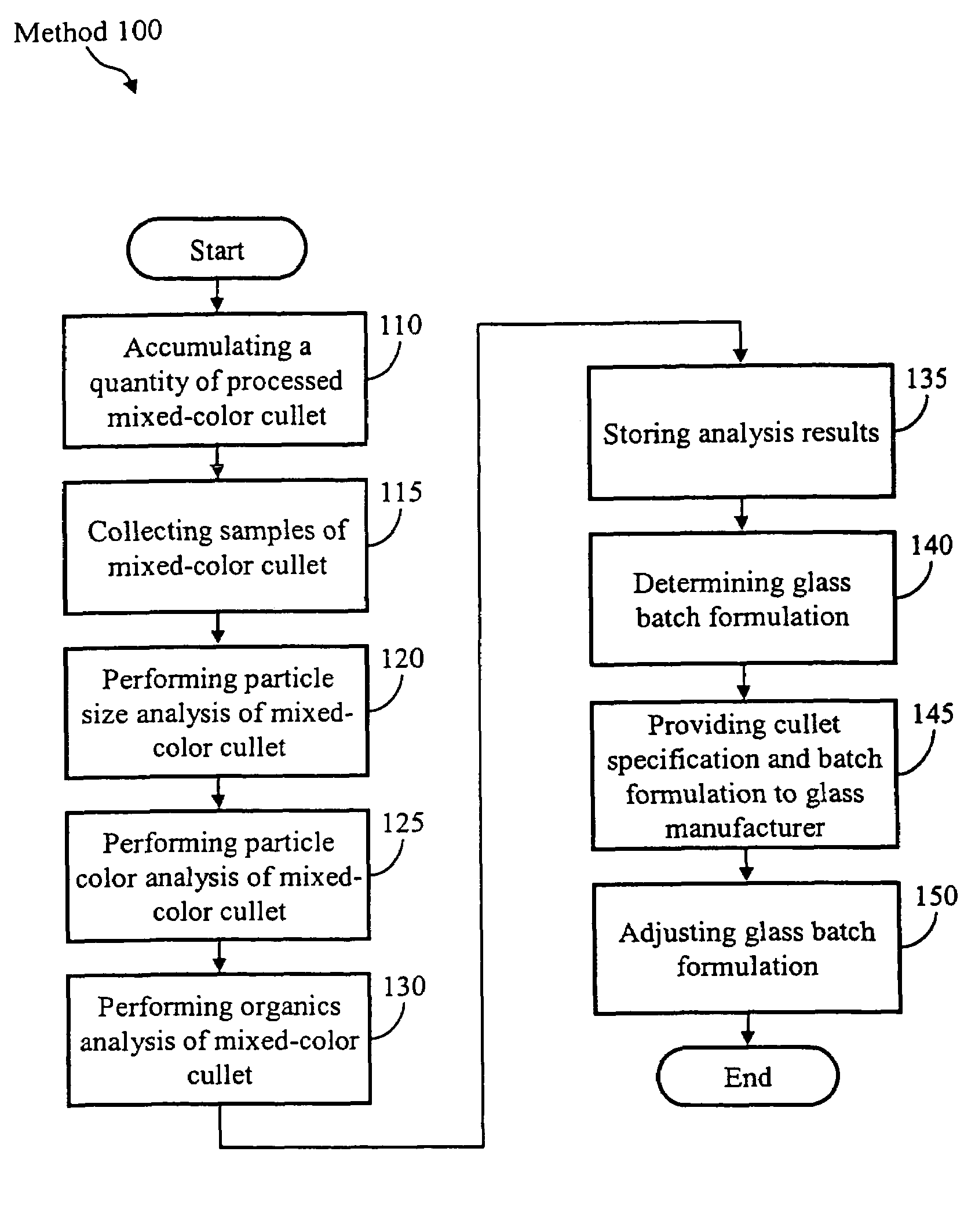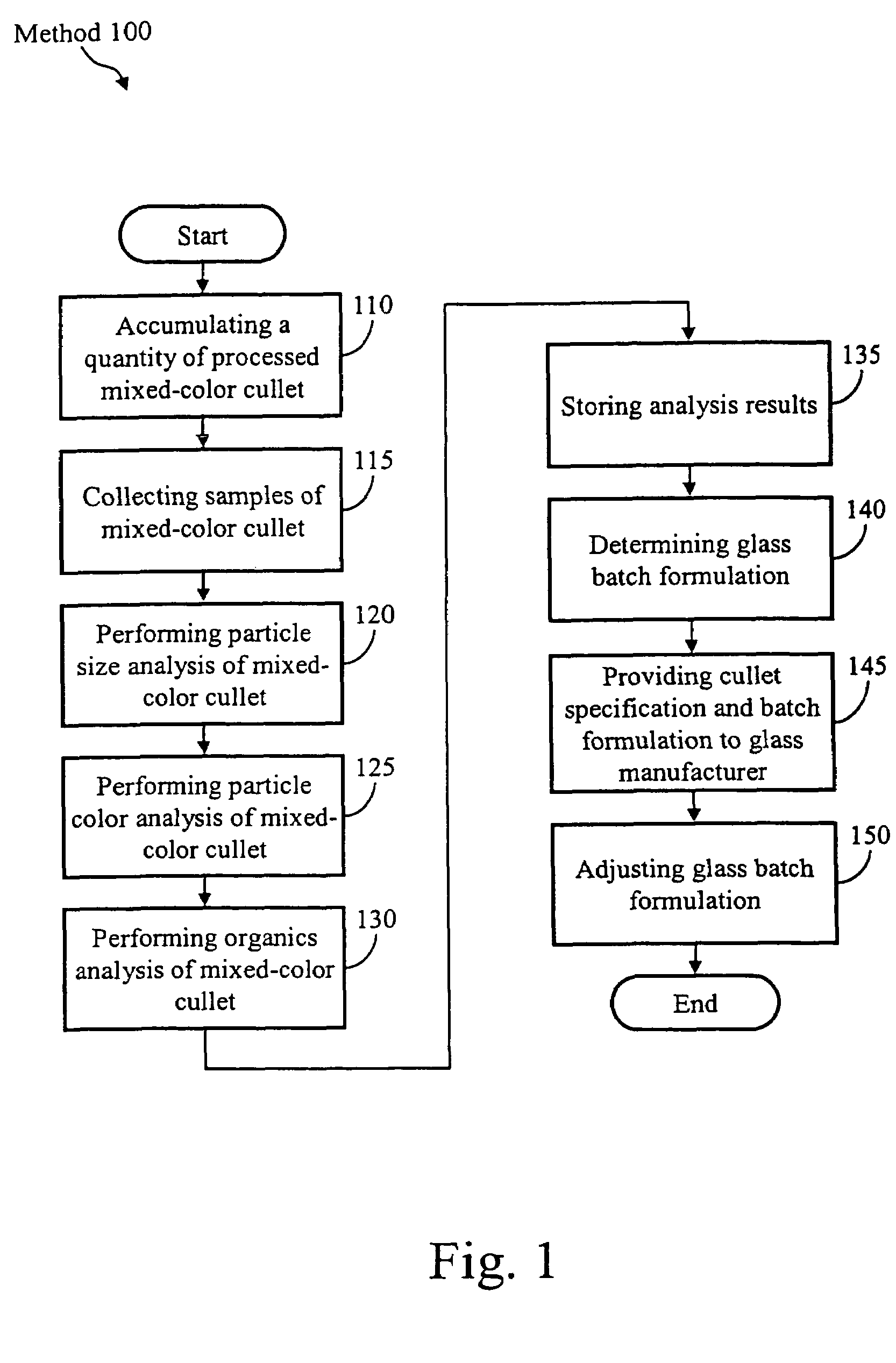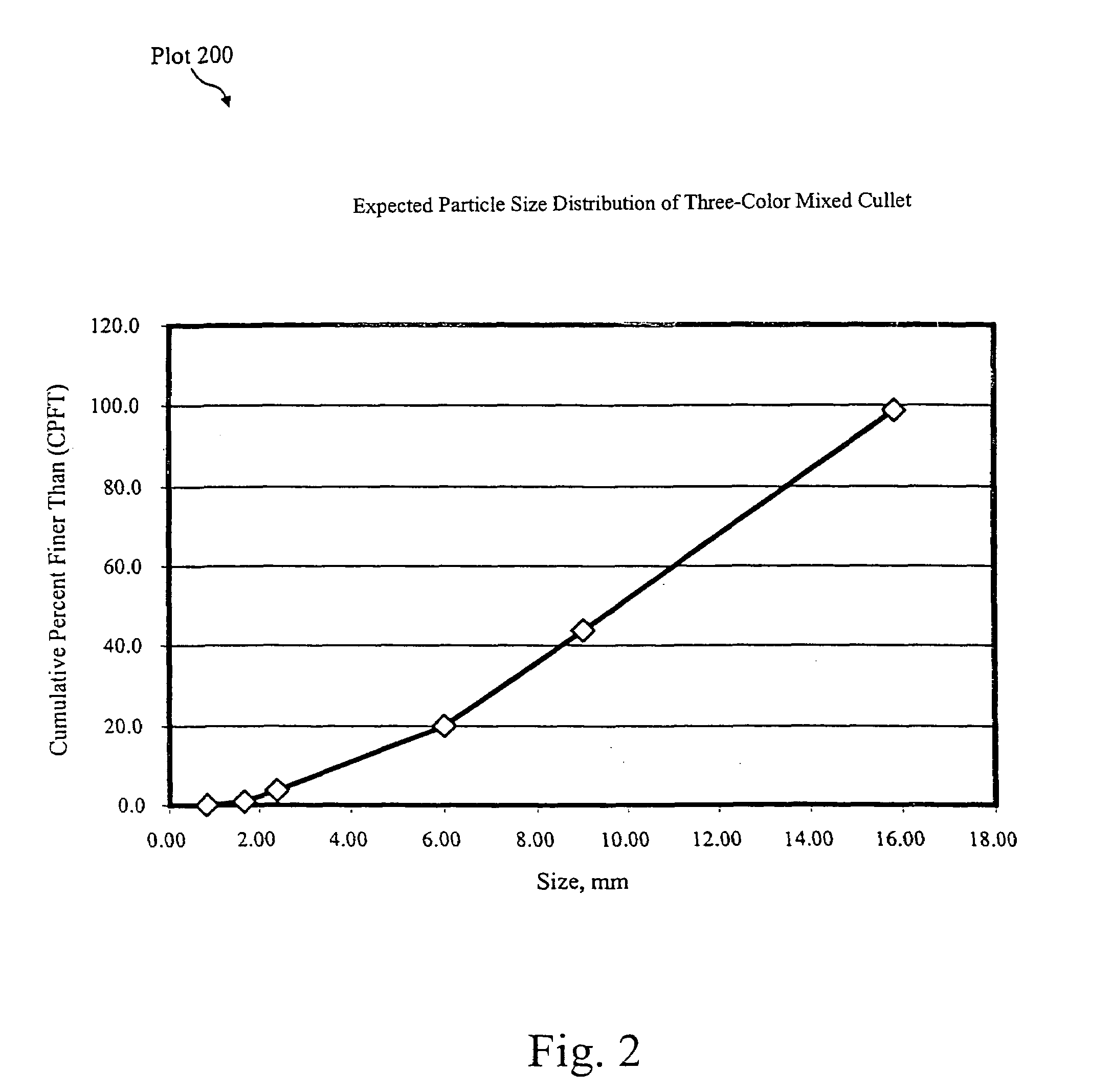Method of analyzing mixed-color cullet to facilitate its use in glass manufacture
a technology of mixed-color cullet and glass, which is applied in the field of glass production, can solve the problems of difficult supply of single-colored recycled glass, difficult to meet the requirements of compliance, and the cost-effective recycling of materials such as glass, and achieve the effect of facilitating its use in glass manufacturing
- Summary
- Abstract
- Description
- Claims
- Application Information
AI Technical Summary
Benefits of technology
Problems solved by technology
Method used
Image
Examples
Embodiment Construction
[0018]The method of recycling mixed cullet with the above-mentioned beneficial features in accordance with the presently preferred embodiment of the invention will be described below with reference to FIGS. 1-2. It will be appreciated by one skilled in the art that the description given herein with respect to those figures is for exemplary purposes only and is not intended in any way to limit the scope of the invention.
[0019]The presently preferred embodiment of the invention is a method of determining the constituents and impurities in mixed-color cullet to facilitate its use in glass manufacture. More specifically, the method of the present invention determines the constituents and impurities in mixed-color cullet, such as, but not limited to, three-color mixed cullet, as described in U.S. patent application Ser. No. 11 / 270,654 entitled, “System for and method of mixed-color cullet characterization and certification and providing contaminant-free, uniformly colored mixed color cul...
PUM
| Property | Measurement | Unit |
|---|---|---|
| weight | aaaaa | aaaaa |
| particle-size | aaaaa | aaaaa |
| particle-size | aaaaa | aaaaa |
Abstract
Description
Claims
Application Information
 Login to View More
Login to View More - R&D
- Intellectual Property
- Life Sciences
- Materials
- Tech Scout
- Unparalleled Data Quality
- Higher Quality Content
- 60% Fewer Hallucinations
Browse by: Latest US Patents, China's latest patents, Technical Efficacy Thesaurus, Application Domain, Technology Topic, Popular Technical Reports.
© 2025 PatSnap. All rights reserved.Legal|Privacy policy|Modern Slavery Act Transparency Statement|Sitemap|About US| Contact US: help@patsnap.com



